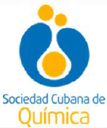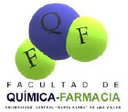Executive Secretary

7th International Chemistry Symposium
SIQ 2019
Cholera epidemics affect a large number of African, Asian and Caribbean countries. The climatic changes and the constant migrations cause that this disease spreads so, it is necessary to obtain protective vaccines. In the present work, a new vaccine of outer membrane vesicles (OMV) from V. cholerae O1 biotype El Tor serotype Ogawa strain C7258 at Finlay Institute of vaccines (Cuba) was characterized by proteomic methods. We identified 53 proteins present in the OMV (approximate ratio of 4 proteins by electrophoresis band) separated by one dimension electrophoresis and digested by tripsin method. The fragments were separated by high pressure chromatography (HPLC) coupled to mass spectrometry, sequenced and identified using Swiss_Prot and TrEMBL protein databases for V. cholera genome. The pattern presented some of proteins (12 cytoplasm proteins and 5 outer membrane proteins) suggested within the OMV highest quality proteome for vaccine candidate. The best conditions for proteins separation by two dimension electrophoresis allowed the resolution of 241 spots, increasing the size of focusing strips (to 24 cm), application in gel and a focusing time of 60 KVh. The OMV composition was based on proteins described to the immunity response and protection against V. cholera O1 biotype El Tor serotype Ogawa.
Cholera epidemics affect a large number of African, Asian and Caribbean countries. The climatic changes and the constant migrations cause that this disease spreads so, it is necessary to obtain protective vaccines. In the present work, a new vaccine of outer membrane vesicles (OMV) from V. cholerae O1 biotype El Tor serotype Ogawa strain C7258 at Finlay Institute of vaccines (Cuba) was characterized by proteomic methods. We identified 53 proteins present in the OMV (approximate ratio of 4 proteins by electrophoresis band) separated by one dimension electrophoresis and digested by tripsin method. The fragments were separated by high pressure chromatography (HPLC) coupled to mass spectrometry, sequenced and identified using Swiss_Prot and TrEMBL protein databases for V. cholera genome. The pattern presented some of proteins (12 cytoplasm proteins and 5 outer membrane proteins) suggested within the OMV highest quality proteome for vaccine candidate. The best conditions for proteins separation by two dimension electrophoresis allowed the resolution of 241 spots, increasing the size of focusing strips (to 24 cm), application in gel and a focusing time of 60 KVh. The OMV composition was based on proteins described to the immunity response and protection against V. cholera O1 biotype El Tor serotype Ogawa.
About The Speaker

MsC. Maria de Los Angeles Padron Collazo






